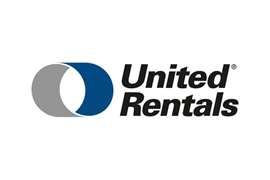Upwardly mobile
25 April 2008

When implementation began of the Temporary Work at Height Directive (2001/45/EC) in the Member States of the European Union it took some time for people to realise the profound implications this legislation would have for working practices. Before the advent of the Directive most employers were concerned about falls from significant heights, but had ignored the potential for injury from lower falls. The common view was that above two metres there was a significant risk but that below this figure the injuries, if they occurred at all, were slight.
This is a perception not borne out by accident statistics, as figures from both the UK and Western Australia show that some 60% of non-fatal injuries from falls from height are from less than 2 m. Consequently, the Directive and national legislation emanating from it, for example, the Work at Height Regulations 2005 in the UK, do not set a lower limit for working at height.
All this means that employers have a duty to ensure that where their employees are working at any height, defined, for example, in the UK regulations as, “Work in any place from which a person could fall a distance liable to cause personal injury”, they have to carry out an assessment of the risks involved and take appropriate measures to eliminate or reduce those risks. This involves using the hierarchical approach of, first, avoiding work at height, second, if this is not possible, preventing falls and, as a last resort, minimising the distance and consequence of any fall.
While at first sight it appears that the requirement for work at height on mobile cranes is not very great, a little reflection shows that it is actually quite extensive, with activities such as rigging, maintenance, inspection and thorough examination and the loading and unloading of ballast trucks. It even comes into play when the operator climbs onto the crane deck to enter the superstructure cab or stands on the cab step to clean the windscreen. In the past manufacturers and users have relied on steps, the odd handhold and loose ladders carried on the deck. However, the requirement for risk assessment quickly shows that the “it will be all right” approach is no longer acceptable.
Solutions
Working through the hierarchy of avoid, prevent and minimise shows that there is significant scope on new cranes for both avoiding work at height, such as the use of centralised lubrication systems, and preventing falls by providing guardrails and anchorages for work restraint systems. Crane manufacturers, particularly in response to customer demand from the UK, are taking this very seriously and coming up with innovative solutions. These include: improved access to the operator's cab; devices to reduce the need to work at height when installing counterweights; draw ropes for pulling hoist ropes without walking the jib; aids to threading ropes over sheaves from ground level; and folding platforms with guard rails for maintenance work.
The major problem, however, remains with existing cranes, where there is less scope for designing out problems. Here the concentration is on minimising the distance and focus of falls with measures such as securing brackets for ladders, fall arrest anchor points, and additional steps and handholds to maintain a three point contact at all times.
In the UK the Construction Plant-hire Association has set up a working group in conjunction with the crane manufacturers to produce guidance on requirements for existing cranes. Manufacturers were also discussing the issue at a meeting of the European manufacturers' association, Fédération Européenne de la Manutention (FEM), at April's Intermat exhibition in Paris.
It is necessary to maintain a sense of perspective for the measures required to address the issue of working at height on mobile cranes. It is easy to rush out and spend a lot of money on Personal Protective Equipment, such as fall arrest systems and work restraint systems, believing it solves all the problems.
What is really needed is a systematic approach that identifies the hazard, evaluates the severity of possible injury and the probability of occurrence, and then devises control measures proportionate to the risk. For example, if the greasing of a sheave on a crawler crane requires a fitter to climb up on the roof once a month for three minutes, the degree of exposure and probability of a fall would be significantly less than if an operator was required to access the roof every day.
In the former case a proportionate response might be to provide a standard ladder that could be hooked onto a securing bracket on the roof and ensure the fitter was adequately trained and properly briefed. In the latter case, where frequent access was required, a fixed access ladder, handholds and guard rails around the roof edge would be more appropriate.
The important point is for crane owners and manufacturers to work together to produce practical industry guidance that addresses the actual, rather than perceived, risks and proposes solutions that are proportionate to the risk. •





